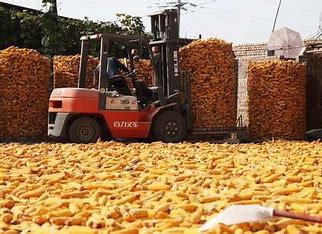System integrator competes with Ericsson and Nokia; in Brazil, Telefónica’s Vivo is a client
12/13/2022
U.S.-based company Mavenir is taking advantage of the deployment of the 5G wireless technology in Brazil by phone carriers to expand its presence in the country. A provider of network software in the cloud, with end-to-end operations, Mavenir is a systems integrator that competes with large suppliers such as Ericsson and Nokia. In Brazil, it has already won Telefónica’s Vivo as a client. Now, it is negotiating with other large carriers and regional providers, according to Antonio Correa, senior regional vice president for Southern Europe, the Caribbean, and Latin America.
Mavenir has been a Vivo supplier for seven years for messaging systems and three years for cybersecurity. To serve the phone carrier in this last project, it has established a commercial partnership with NEC, said Mr. Correa.
Vivo declined to comment. NEC said that the alliance was designed for the integration of a “proof of concept” of open RAN (open network, with different suppliers) for Vivo in Pernambuco. Mavenir wanted the Japanese multinational to lead the equipment implementation process. The result was considered very positive, according to NEC, and served at the time as a successful case of network architecture for the two companies worldwide.
Mavenir serves more than 250 communication service providers in 120 countries and employs 5,000 people around the world. The company expects to post a global revenue of $750 million this year. In Brazil, the operation is still small.
The company, which is focused on applications for 5G technology, made a capital increase of $155 million in October. The company has raised $250 million in strategic capital since July. The funds will be used to finance products that drive the company’s growth.
With the capital increase, Siris, a private-equity firm focused on technology, which was the first investor, remained the largest shareholder. In the last four years, Koch Strategic Platforms, a subsidiary of Koch Industries, and microprocessor manufacturers Intel and Nvidia have joined as minority shareholders.
On Mavenir’s website, CEO Pardeep Kohli said that it took seven years for the company to reach its current level and that he has spent the last three years building a team to design and build radios for network communication. In the case of Brazil, Mr. Correa said that there is interest in assembling these open RAN radios, but this will first depend on the business “getting off the ground.”
/i.s3.glbimg.com/v1/AUTH_37554604729d4b2f9f3eb9ad8a691345/internal_photos/bs/2022/j/2/9Zit9BTQqIB6byLTecxg/img-1052-pp.jpg)
Anderson André — Foto: Divulgação
“We have global assembly partners, including in Brazil, to start [producing] as soon as we have contracts,” said Mavenir’s vice president for Brazil, Anderson André. The primary production process will be the model used.
Mr. Correa said that he started to focus on Latin America in the last three years, mainly interested in increasing the company’s presence in Brazil, due to the potential 5G market and integrating its geographical service area, which became its territory almost three years ago. The executive said that besides negotiating with providers and phone carriers, he has also talked to integrators already established in Brazil with the aim of expanding the service arm and accelerating opportunities in the local market.
For now, the investments in Brazil are with personnel. The company has an office in São Paulo and a team in Rio de Janeiro.
Anderson André said that an ecosystem of integrators is being built that will “sew” the pieces to supply customers. The executive is confident in the wide range of possibilities that are opening up with 5G to serve the corporate market that operates in wholesale and retail.
*By Ivone Santana — São Paulo
Source: Valor International

/i.s3.glbimg.com/v1/AUTH_37554604729d4b2f9f3eb9ad8a691345/internal_photos/bs/2022/p/X/OXAoBIQoSQNaMicOLzIQ/230921xp07.jpg)

/i.s3.glbimg.com/v1/AUTH_37554604729d4b2f9f3eb9ad8a691345/internal_photos/bs/2022/W/5/NitybgRwAQND4qfroDig/12leg-100-abre-e1-img01.jpg)
/i.s3.glbimg.com/v1/AUTH_37554604729d4b2f9f3eb9ad8a691345/internal_photos/bs/2022/J/8/e1dAkJROqeX1p235JPxw/alex-manente-luis-macedo-camara-dos-deputados.png)
/i.s3.glbimg.com/v1/AUTH_37554604729d4b2f9f3eb9ad8a691345/internal_photos/bs/2022/s/Y/h4B1a0Ri6jEswZp5bYNA/aurelien-201.jpg)

/i.s3.glbimg.com/v1/AUTH_37554604729d4b2f9f3eb9ad8a691345/internal_photos/bs/2022/m/9/lirbghSBAQCsPAJaaxWQ/051222alexandre12.jpg)
/i.s3.glbimg.com/v1/AUTH_37554604729d4b2f9f3eb9ad8a691345/internal_photos/bs/2022/a/W/4DJz1iR02A0APizFDSEA/020522marcio32.jpg)
/i.s3.glbimg.com/v1/AUTH_37554604729d4b2f9f3eb9ad8a691345/internal_photos/bs/2021/a/b/nBbtxbSdqCAAzOQ6Zvkg/predio-banco-central-reproducao-facebook.jpg)